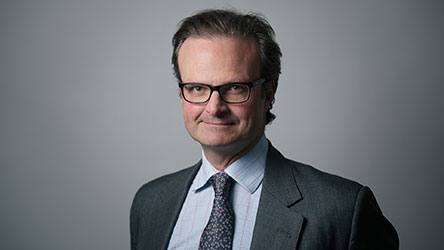The legal profession has an image problem. For many students thinking of a career in the law, the Bar in particular is seen as overwhelmingly white, male and privately educated; the language of the law is old fashioned and resonates a world of privilege; and this image is compounded by photos of judges in full court dress and long-bottomed wigs in media reports.
For many state school-educated students, a career in the law is not even on their radar. For those who do aspire to a career ‘at the Bar’, visiting the Inns of Court in London (where they must eventually ‘be called’ in order to practice) and the formality of dining in Hall is likely only to accentuate feelings of being out of place amongst such ivory towers.
Putting the prohibitive cost of legal training to one side, it must surely be easier for a student from public school and Oxbridge to transition confidently from cloistered university to life in the Temple.
The Bar has done much in recent years to understand and counter the image problem and to tackle the underlying causes. The Inns spend millions of pounds on scholarships and access to the Bar initiatives. Middle Temple alone provides over £1m in means-tested scholarships each year and its work with state schools and universities seeks to provide real support and encouragement to students from non-traditional backgrounds to pursue a career at the Bar.
Some chambers have links with schools and assist with expenses-paid mini-pupillages; and individual barristers give time to outreach initiatives, such as those provided by the Kalisher Trust (the only legal charity devoted to enabling wider access to the Bar).
Two recent reports produced by the Bar Standards Board (BSB) on Diversity at the Bar and Pupillage, show that there is still much to be done, however. Taking two indicators, whilst the proportion of women and BAME barristers has increased in recent years, there is still a smaller proportion at the Bar than in the working population nationally (37.4% of women compared to 50.3% nationally; 13% BAME compared to 15.5% nationally).
Figures showing progression to QC are improving ever-so slightly (of QCs, 15.8% are now women, 7.8% BAME). Of the 108 QCs appointed in 2019, 41.9% of male applicants were successful, compared to 54.5% of female and 43.3% of BAME applicants, but this should be seen in the context of 88% of new silks being white.
There are 417 pupils currently in pupillage nationally. 81.5% are white, over 50% are women, but only 13.9% are BAME. These figures may show some progress, but still highlight concerns for the current state of diversity at the Bar, as well as raising significant issues relating to career progression.
These statistics may help to quantify the size of the problem, but if the Bar is genuine in its desire to address the issue of diversity, it has to ensure equality of opportunity at the recruitment stage: pupillage.
As the BSB concedes, ‘socio-economic background is not a protected characteristic under the Equality Act… however, it can be a good indicator of a meritocratic profession’. Although there was a low reporting response (51% on this issue) in the most recent survey, 15.5% of the Bar attended independent schools (compared to a national average of 7%). That figure is likely to be far higher given the low response.
The BSB itself concludes that the available data indicates a ‘disproportionately high percentage of the Bar’ attended independent schools. The Bar needs to ask itself: are we doing enough to promote equality and diversity in our search for the best barristers of the future, bearing in mind the words of Lord Neuberger that ‘the Bar can only flourish and retain public confidence if it is a diverse and inclusive profession’.
So, what can chambers do? The approach of all sets should be governed by the Fair Recruitment Guide issued by the Bar Council, in which the principles of fair selection, objective assessment and interviewing (to avoid discrimination or unconscious bias), transparency, monitoring and evaluation are made clear.
In addition, chambers should consider alternative procedural approaches: anonymising the pupillage application form so that the first sift to select for interview is done by number only; redacting the school – or making allowance for extenuating circumstances, such as the Ofsted grading of the school or its overall exam results.
This raises a more fundamental question: is it necessary to take into account secondary school exam results when there are undergraduate (and often post-graduate) degree and BPTC results by which to evaluate academic and intellectual ability?
If two applicants both have a 2:1, should it really make any difference that one has A*A*A at A level from, say, Winchester, and the other, from an inner-city comprehensive school, ABC? Should the university attended have any particular weight, given that, again, a disproportionate number of public school students attend Oxbridge or Russell Group universities?
There is another, perhaps more pressing issue. If chambers are committed to promoting equality and diversity, shouldn’t they take a more proactive approach? This might include outreach – visiting state schools and universities to encourage students to consider a career at the Bar; support – providing mentoring and practical advice relating to application forms and interviews, offering funded mini-pupillages and paying expenses to attend interview; and care – from ensuring wellbeing throughout pupillage to assisting pupils whom they cannot take on with the search for a tenancy elsewhere.
If the profession wishes to cast off the image of being privileged and exclusive, we need to have this conversation and to act decisively.
